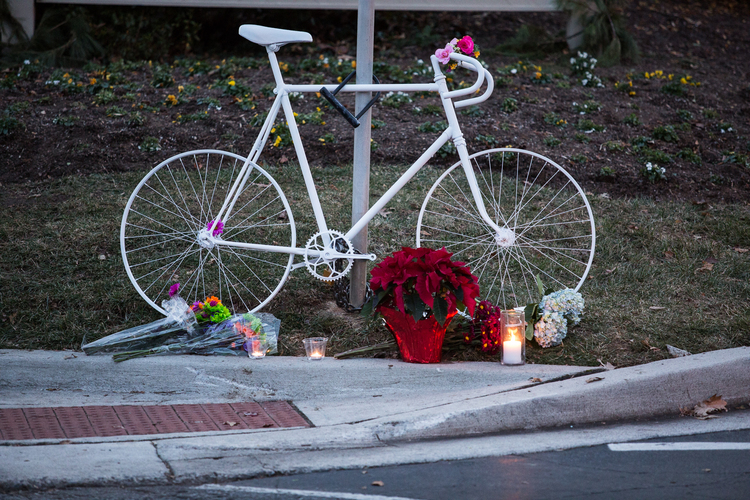Photo by Brian O’Doherty
In the days following the death of bicyclist Tom Palermo, after he was hit by Bishop Suffragan Heather Cook, much of the news has focused on Cook, Episcopal Church policies, and perspectives on alcohol in the church.
Rev. Laura Everett, executive director of the Massachusetts Council of Churches and a cyclist, writes about the poor impression that this focus gives to cyclists and outsiders on her blog.
Her article urges us to focus on the grief and fear that this and other tragedies bring to cyclists and the cycling community.
From the blog:
A man has died. And we have spent the preponderance of our social media conversation talking not about Tom Palermo, but talking about protocols for episcopal elections, proper disclosure of information, and “what this means for the Church.” We say “it is a utter tragedy for all involved,” and then spend 97% of the conversation about the tragedy this is for the Church. Perhaps all this focus on Bishop Cook and the Church is a symptom of the family disease of alcoholism in our family system of the Church. It is good and right and far overdue that we have serious conversation about addiction and recovery in the Church, alcohol in the Church, and how we talk to one another in the Church. But if these are the only conversation we are having, we look and probably are, self-involved.
Cyclists used Facebook to ask that Cook face criminal charges for Palermo’s death; they’ve updated their page to express gratitude to the State of Maryland for the indictment and charges filed.
https://www.facebook.com/JusticeForTomPalermo/posts/614327148700158
Representatives and members of the cycling community have attempted to talk about the systemic inequalities in road planning and design that endanger cyclists and contribute to the 700 cyclists killed, on average, in traffic collisions per year. (Source: NHTSA Traffic Safety Facts, 699.2/year)
Greater Greater Washington explored how the road could have been designed to be safer, and the League of American Bicyclists expressed dismay that the majority of drivers involved in fatal accidents with cyclists do not face criminal charges. Their 2012 report, “Every Bicyclist Counts“, found that criminal charges only result in 12% of fatal crashes.
From the League of American Bicyclists statement:
“There are no winners in the aftermath of the awful tragedy that took the life of cyclist Thomas Palermo on the afternoon of December 27,” said Andy Clarke, League President. “We mourn the loss of a fellow cyclist, a father of two, and take no satisfaction in welcoming the charges brought against the driver. Heather Cook had no business being behind the wheel of car that day and was a danger to everyone on the road at the same time as her. The terrible danger of drinking and driving is well known and documented — there is simply no excuse for that behavior. The fact that she may also have been distracted by texting while driving argues for the strongest possible punishment — to prevent her from ever doing this again and to send a clear signal to others that these behaviors are not acceptable.”
Everett poses a series of questions, and maybe challenges, for those of us observing this tragedy in the aftermath.
Again from the blog:
Get as curious about Tom Palermo’s life as we’ve been about Bishop Cook’s. Hear the anger of the cycling community and do not correct it. Simply hear the grief the cycling community at the death of a kind man who learned how to build bike frames and commuted to work daily by bike. Feel the daily anxiety of bike commuters. Palermo was killed on a stretch of wide road with bike lanes, a road considered very safe in North Baltimore; Use your pastoral imagination to wonder how unsafe other cyclists are feeling after his death. Hear the anger of cyclists who learned of Palermo being left to die at the scene of the crime. Imagine what perception of the institutional Church the cycling community has after this tragedy. Hear the disappointment of cyclists that, in the words of Bicycling magazine, “a supposedly moral pillar of the community” flees the scene of a dying man. Listen to the cyclists wondering if class, ecclesial, and white privilege factored into the time delay between the accident and the arrest.
Has this tragedy made you more aware of the vulnerable position that many cyclists are in on their daily commutes and rides?
Posted by David Streever

